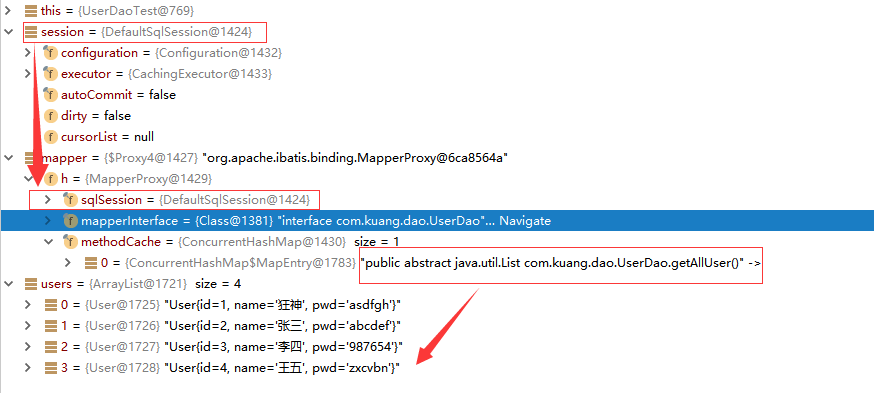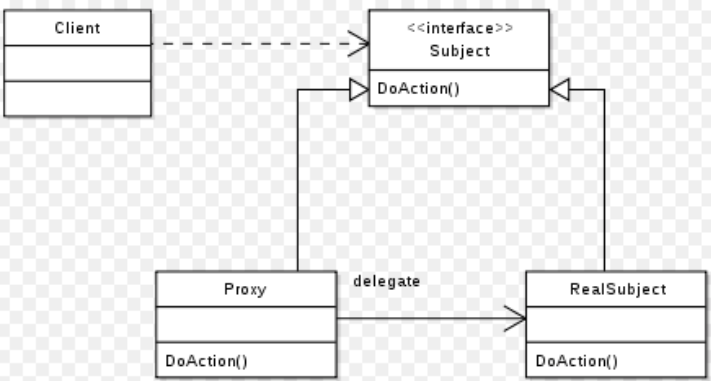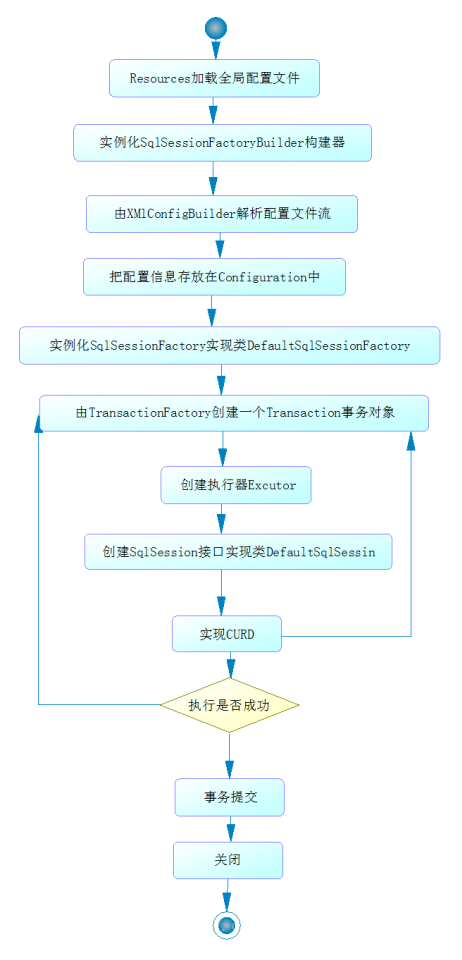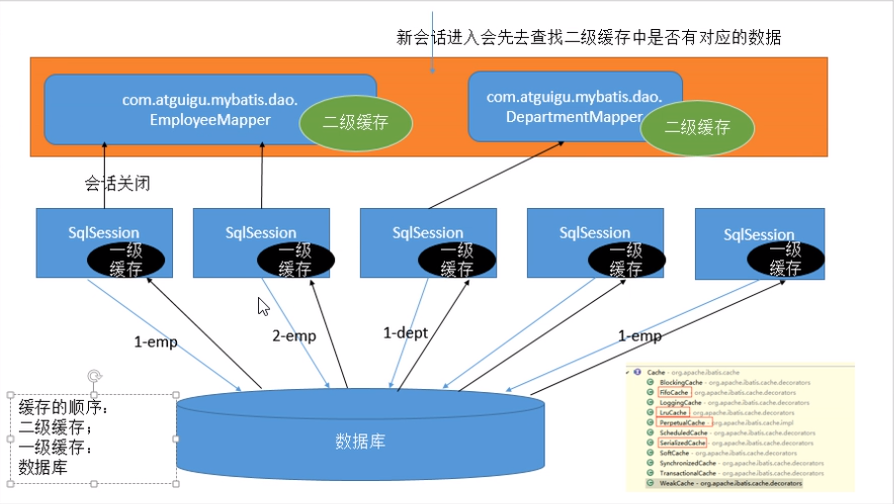持久化是将程序数据在持久状态和瞬时状态间转换的机制。
即把数据(如内存中的对象)保存到可永久保存的存储设备中(如磁盘)。持久化的主要应用是将内存中的对象存储在数据库中,或者存储在磁盘文件中、XML数据文件中等等。
JDBC就是一种持久化机制。文件IO也是一种持久化机制。
简单易学:本身就很小且简单。没有任何第三方依赖,最简单安装只要两个jar文件+配置几个sql映射文件就可以了,易于学习,易于使用,通过文档和源代码,可以比较完全的掌握它的设计思路和实现。
灵活:mybatis不会对应用程序或者数据库的现有设计强加任何影响。 sql写在xml里,便于统一管理和优化。通过sql语句可以满足操作数据库的所有需求。
解除sql与程序代码的耦合:通过提供DAO层,将业务逻辑和数据访问逻辑分离,使系统的设计更清晰,更易维护,更易单元测试。sql和代码的分离,提高了可维护性。
提供xml标签,支持编写动态sql。
1. maven中添加依赖
1 2 3 4 5 6 7 8 9 10 11 12 13 14 15 16 17 18 19 20 21 22 23 24 25 26 27 28 29 30 31 32 33 34 35 36 <dependencies > <dependency > <groupId > org.mybatis</groupId > <artifactId > mybatis</artifactId > <version > 3.5.3</version > </dependency > <dependency > <groupId > mysql</groupId > <artifactId > mysql-connector-java</artifactId > <version > 5.1.47</version > </dependency > </dependencies > <build > <resources > <resource > <directory > src/main/resources</directory > <includes > <include > **/*.properties</include > <include > **/*.xml</include > </includes > <filtering > true</filtering > </resource > <resource > <directory > src/main/java</directory > <includes > <include > **/*.properties</include > <include > **/*.xml</include > </includes > <filtering > true</filtering > </resource > </resources > </build >
2. 配置mybatis-config.xml
1 2 3 4 5 6 7 8 9 10 11 12 13 14 15 16 17 18 19 20 21 22 23 24 25 26 27 28 29 30 31 32 33 34 35 36 37 38 39 40 41 42 43 <?xml version="1.0" encoding="UTF-8" ?> <!DOCTYPE configuration PUBLIC "-//mybatis.org//DTD Config 3.0//EN" "http://mybatis.org/dtd/mybatis-3-config.dtd" > <configuration > <properties resource ="db.properties" /> <settings > <setting name ="logImpl" value ="STDOUT_LOGGING" /> <setting name ="mapUnderscoreToCamelCase" value ="true" /> <setting name ="cacheEnabled" value ="true" /> </settings > <typeAliases > <typeAlias type ="com.zhao.pojo.User" alias ="user" /> <package name ="com.zhao.pojo" /> </typeAliases > <environments default ="development" > <environment id ="development" > <transactionManager type ="JDBC" /> <dataSource type ="POOLED" > <property name ="driver" value ="${driver}" /> <property name ="url" value ="${url}" /> <property name ="username" value ="${username}" /> <property name ="password" value ="${password}" /> </dataSource > </environment > </environments > <mappers > <mapper resource ="com/zhao/dao/UserMapper.xml" /> </mappers > </configuration >
db.properties
1 2 3 4 driver =com.mysql.jdbc.Driver url =jdbc:mysql://localhost:3306/smbms?useUnicode=true&characterEncoding=utf8&useSSL=true username =root password =zhaoyuyun
注意 :在MyBatis的核心配置文件xml中,配置数据库的参数时,url=xxx&characterset=xxx需要带上转义符号amp; 但是如果通过db.properties中设置参数时不需要加上转义符,只需要&
3. 编写MyBatis工具类
1 2 3 4 5 6 7 8 9 10 11 12 13 14 15 16 17 18 19 20 21 22 23 24 25 26 import org.apache.ibatis.io.Resources;import org.apache.ibatis.session.SqlSession;import org.apache.ibatis.session.SqlSessionFactory;import org.apache.ibatis.session.SqlSessionFactoryBuilder;import java.io.IOException;import java.io.InputStream;public class MybatisUtils private static SqlSessionFactory sqlSessionFactory; static { try { String resource = "mybatis-config.xml" ; InputStream inputStream = Resources.getResourceAsStream(resource); sqlSessionFactory = new SqlSessionFactoryBuilder().build(inputStream); } catch (IOException e) { e.printStackTrace(); } } public static SqlSession getSession () return sqlSessionFactory.openSession(true ); } }
4. 注册实体类
1 2 3 4 5 6 7 8 9 public class User private int id; private String name; private String pwd; }
5. 编写Mapper接口类
1 2 3 4 5 import com.zhao.pojo.User;import java.util.List;public interface UserMapper List<User> selectUser () ; }
6. 编写Mapper.xml配置文件(配置文件中namespace中的名称为对应Mapper接口或者Dao接口的完整包名,必须一致!)
1 2 3 4 5 6 7 8 9 <?xml version="1.0" encoding="UTF-8" ?> <!DOCTYPE mapper PUBLIC "-//mybatis.org//DTD Mapper 3.0//EN" "http://mybatis.org/dtd/mybatis-3-mapper.dtd" > <mapper namespace ="com.zhao.dao.UserMapper" > <select id ="selectUser" resultType ="com.zhao.pojo.User" > select * from user </select > </mapper >
7. 测试
1 2 3 4 5 6 7 8 9 10 11 12 13 14 15 16 17 public class MyTest @Test public void selectUser () SqlSession session = MybatisUtils.getSession(); UserMapper mapper = session.getMapper(UserMapper.class); List<User> users = mapper.selectUser(); for (User user: users){ System.out.println(user); } session.close(); } }
四种语句的通用属性:
id:命名空间中唯一的标识符,接口中的方法名与映射文件中的SQL语句id一一对应parameterType:传入SQL语句的参数类型(可以使用万能的Map)resultType:SQL语句返回值类型(完整的类名或者别名)
需求:根据id查询用户
在UserMapper中添加对应方法(可以使用@Param注解给形参名起别名)
1 2 3 4 5 6 public interface UserMapper List<User> selectUser () ; User selectUserById (@Param("id") int id) ; }
在UserMapper.xml中添加select语句(MyBatis会将select *返回的数据库字段名映射为pojo类对象的属性,即去对应的实体类中查找相应字段名的set方法设值【自动映射】,若属性名与数据库字段名不一致,即找不到对应的set方法,则属性值为null,此时需要使用ResultMap)
1 2 3 <select id ="selectUserById" resultType ="com.zhao.pojo.User" > select * from user where id = #{id} </select >
测试
1 2 3 4 5 6 7 8 9 @Test public void tsetSelectUserById () SqlSession session = MybatisUtils.getSession(); UserMapper mapper = session.getMapper(UserMapper.class); User user = mapper.selectUserById(1 ); System.out.println(user); session.close(); }
需求:给数据库增加一个用户
在UserMapper接口中添加对应的方法
1 2 int addUser (User user)
在UserMapper.xml中添加insert语句(传入形参是pojo时,SQL语句中的#{}会与类对象的属性变量名判断是否能够对应,不能对应的解析为null)
1 2 3 <insert id ="addUser" parameterType ="com.zhao.pojo.User" > insert into user (id,name,pwd) values (#{id},#{name},#{pwd}) </insert >
测试
1 2 3 4 5 6 7 8 9 10 11 12 13 @Test public void testAddUser () SqlSession session = MybatisUtils.getSession(); UserMapper mapper = session.getMapper(UserMapper.class); User user = new User(5 ,"王五" ,"zxcvbn" ); int i = mapper.addUser(user); System.out.println(i); session.commit(); session.close(); }
注意:增、删、改操作需要提交事务!设置方法:
每次会话使用完后session.commit();
或在工具类中设置sqlSessionFactory.openSession(true);
需求:修改用户的信息
编写接口方法
1 2 int updateUser (User user)
编写对应的配置文件SQL
1 2 3 <update id ="updateUser" parameterType ="com.zhao.pojo.User" > update user set name = #{name},pwd = #{pwd} where id = #{id} </update >
测试
1 2 3 4 5 6 7 8 9 10 11 @Test public void testUpdateUser () SqlSession session = MybatisUtils.getSession(); UserMapper mapper = session.getMapper(UserMapper.class); User user = mapper.selectUserById(1 ); user.setPwd("123456" ); int i = mapper.updateUser(user); System.out.println(i); session.commit(); session.close(); }
需求:根据id删除一个用户
编写接口方法
1 2 int deleteUser (int id)
编写对应的配置文件SQL
1 2 3 <delete id ="deleteUser" parameterType ="int" > delete from user where id = #{id} </delete >
测试
1 2 3 4 5 6 7 8 9 @Test public void testDeleteUser () SqlSession session = MybatisUtils.getSession(); UserMapper mapper = session.getMapper(UserMapper.class); int i = mapper.deleteUser(5 ); System.out.println(i); session.commit(); session.close(); }
当传入的形参变量名称与SQL语句中的#{}中变量名不一致时,有两种解决方案:
使用@Param注解
在方法只接受一个参数的情况下,可以不使用@Param
在方法接受多个参数的情况下,建议一定要使用@Param
如果参数是 JavaBean , 则不能使用@Param
不使用@Param
1 2 3 4 5 6 7 8 User selectUserByNP (@Param("uname") String username, @Param("pwd") String password) ;
使用万能的Map
在接口方法中,参数直接传递Map;
1 User selectUserByNP2 (Map<String,Object> map) ;
编写SQL语句的时候,需要传递参数类型,参数类型为Map
1 2 3 <select id ="selectUserByNP2" parameterType ="map" resultType ="com.zhao.pojo.User" > select * from user where name = #{uname} and password = #{pwd} </select >
在使用方法的时候,Map的 key 为 sql中取的值即可,没有顺序要求!
1 2 3 4 Map<String, Object> map = new HashMap<String, Object>(); map.put("uname" , "小明" ); map.put("pwd" , "123456" ); User user = mapper.selectUserByNP2(map);
小结:
所有的增删改操作都需要提交事务
接口所有的普通参数,尽量都写上@Param
有时候根据业务的需求,可以考虑使用map传递参数
为了规范操作,在SQL的配置文件中,尽量将Parameter参数和resultType都写上
mybatis-config.xml 系统核心配置文件
MyBatis 的配置文件包含了会深深影响 MyBatis 行为的设置和属性信息。
能配置的内容如下:
1 2 3 4 5 6 7 8 9 10 11 12 13 14 configuration(配置) properties(属性) settings(设置) typeAliases(类型别名) typeHandlers(类型处理器) objectFactory(对象工厂) plugins(插件) environments(环境配置) environment(环境变量) transactionManager(事务管理器) dataSource(数据源) databaseIdProvider(数据库厂商标识) mappers(映射器) <!-- 注意元素节点的顺序!顺序不对会报错 -->
1 2 3 4 5 6 7 8 9 10 11 12 13 <environments default ="development" > <environment id ="development" > <transactionManager type ="JDBC|MANAGED" > <property name ="..." value ="..." /> </transactionManager > <dataSource type ="UNPOOLED|POOLED|JNDI" > <property name ="driver" value ="${driver}" /> <property name ="url" value ="${url}" /> <property name ="username" value ="${username}" /> <property name ="password" value ="${password}" /> </dataSource > </environment > </environments >
配置MyBatis的多套运行环境,将SQL映射到多个不同的数据库上,必须指定其中一个为默认运行环境(通过default指定)
子元素节点:environment
具体的一套环境,通过设置id进行区别,id保证唯一
子元素节点:transactionManager - [ 事务管理器 ]
子元素节点:数据源(dataSource)
dataSource 元素使用标准的 JDBC 数据源接口来配置 JDBC 连接对象的资源。
数据源是必须配置的。
有三种内建的数据源类型
unpooled: 这个数据源的实现只是每次被请求时打开和关闭连接。
pooled : 这种数据源的实现利用“池”的概念将 JDBC 连接对象组织起来 , 这是一种使得并发 Web 应用快速响应请求的流行处理方式。jndi:这个数据源的实现是为了能在如 Spring 或应用服务器这类容器中使用,容器可以集中或在外部配置数据源,然后放置一个 JNDI 上下文的引用。
数据源也有很多第三方的实现,比如dbcp,c3p0,druid等等….
映射器 : 定义映射SQL语句文件。
1 2 3 4 5 6 7 8 9 10 11 12 13 14 15 16 17 18 <mappers > <mapper resource ="org/mybatis/builder/PostMapper.xml" /> </mappers > <mappers > <mapper url ="file:///var/mappers/AuthorMapper.xml" /> </mappers > <mappers > <mapper class ="org.mybatis.builder.AuthorMapper" /> </mappers > <mappers > <package name ="org.mybatis.builder" /> </mappers >
1 2 3 <?xml version="1.0" encoding="UTF-8" ?> <!DOCTYPE mapper PUBLIC "-//mybatis.org//DTD Mapper 3.0//EN" "http://mybatis.org/dtd/mybatis-3-mapper.dtd" > <mapper namespace ="com.zhao.mapper.UserMapper" > </mapper >
namespace中文意思:命名空间,作用如下:
namespace和子元素的id联合保证唯一,区别不同的mapper
绑定DAO接口
namespace的命名必须跟某个接口同名
接口中的方法与映射文件中sql语句id应该一一对应
namespace命名规则 : 包名+类名
类型别名是为 Java 类型设置一个短的名字。它只和 XML 配置有关,存在的意义仅在于用来减少类完全限定名的冗余。
1 2 3 4 <typeAliases > <typeAlias type ="com.zhao.pojo.User" alias ="User" /> </typeAliases >
当这样配置时,User可以用在任何使用com.zhao.pojo.User的地方。也可以指定一个包名,MyBatis 会在包名下面搜索需要的 Java Bean,比如:
1 2 3 <typeAliases > <package name ="com.zhao.pojo" /> </typeAliases >
每一个在包 com.zhao.pojo 中的 Java Bean,在没有注解的情况下,会使用 Bean 的首字母小写的非限定类名来作为它的别名。
若有注解,则别名为其注解值:
1 2 3 4 @Alias("user") public class User ... }
设置(settings)
一个配置完整的 settings 元素的示例如下:
1 2 3 4 5 6 7 8 9 10 11 12 13 14 15 16 17 <settings > <setting name ="cacheEnabled" value ="true" /> <setting name ="lazyLoadingEnabled" value ="true" /> <setting name ="multipleResultSetsEnabled" value ="true" /> <setting name ="useColumnLabel" value ="true" /> <setting name ="useGeneratedKeys" value ="false" /> <setting name ="autoMappingBehavior" value ="PARTIAL" /> <setting name ="autoMappingUnknownColumnBehavior" value ="WARNING" /> <setting name ="defaultExecutorType" value ="SIMPLE" /> <setting name ="defaultStatementTimeout" value ="25" /> <setting name ="defaultFetchSize" value ="100" /> <setting name ="safeRowBoundsEnabled" value ="false" /> <setting name ="mapUnderscoreToCamelCase" value ="false" /> <setting name ="localCacheScope" value ="SESSION" /> <setting name ="jdbcTypeForNull" value ="OTHER" /> <setting name ="lazyLoadTriggerMethods" value ="equals,clone,hashCode,toString" /> </settings >
要解决的问题:pojo属性名和数据库字段名不一致 。解决方案:
方案一:为字段名指定别名,别名和java实体类的属性名一致 .
1 2 3 <select id ="selectUserById" resultType ="User" > select id, name, pwd as password from user where id = #{id} </select >
2. 方案二:使用结果集映射->ResultMap 【推荐】
1 2 3 4 5 6 7 8 9 10 11 <resultMap id ="UserMap" type ="User" > <id column ="id" property ="id" /> <result column ="name" property ="name" /> <result column ="pwd" property ="password" /> </resultMap > <select id ="selectUserById" resultMap ="UserMap" > select id, name, pwd from user where id = #{id} </select >
resultMap 元素是 MyBatis 中最重要最强大的元素。它可以让开发人员从 90% 的 JDBC ResultSets 数据提取代码中解放出来。ResultMap 的设计思想是,对于简单的语句根本不需要配置显式的结果映射,而对于复杂一点的语句只需要描述它们的关系就行了。
默认情况没有显式指定 resultMap。比如:
1 2 3 <select id ="selectUserById" resultType ="map" > select id, name, pwd from user where id = #{id} </select >
上述语句只是简单地将所有的列映射到 HashMap 的键上,这由 resultType 属性指定。虽然在大部分情况下都够用,但是 HashMap 不是一个很好的模型。我们的程序更可能会使用 JavaBean 或 POJO(Plain Old Java Objects,普通老式 Java 对象)作为模型。
返回值类型为resultMap
1 2 3 <select id ="selectUserById" resultMap ="UserMap" > select id, name, pwd from user where id = #{id} </select >
编写resultMap,实现手动映射
1 2 3 4 5 6 7 8 9 10 11 <resultMap id ="UserMap" type ="User" > <id column ="id" property ="id" /> <result column ="name" property ="name" /> <result column ="pwd" property ="password" /> <collection property ="attrs" ofType ="User" > <result column ="attr_name" property ="attrName" > </result > <result column ="attr_value" property ="attrValue" > </result > </collection > </resultMap >
其中,可以在 collection 标签内进行自定义结果集(集合数据),常用于返回结果较为复杂的情况。例如类中嵌套一个集合,此时无法自动解析出返回的集合数据结果,需要使用 collection 自定义集合。
使用注解开发时不需要再写mapper.xml文件,直接在接口类的方法上添加注解即可。共有四个注解 :
@select()@update()@Insert()@delete()
1 2 3 @Select("select id,name,pwd password from user") public List<User> getAllUser ()
1 2 3 @Select("select * from user where id = #{id}") User selectUserById (@Param("id") int id) ;
1 2 3 @Insert("insert into user (id,name,pwd) values (#{id},#{name},#{pwd})") int addUser (User user)
1 2 3 @Update("update user set name=#{name},pwd=#{pwd} where id = #{id}") int updateUser (User user)
1 2 3 @Delete("delete from user where id = #{id}") int deleteUser (@Param("id") int id)
1 2 3 @Select("select id,name,pwd password from user") public List<User> getAllUser ()
1 2 3 4 <mappers > <mapper class ="com.zhao.mapper.UserMapper" /> </mappers >
1 2 3 4 5 6 7 8 9 10 11 12 @Test public void testGetAllUser () SqlSession session = MybatisUtils.getSession(); UserMapper mapper = session.getMapper(UserMapper.class); ● List<User> users = mapper.getAllUser(); for (User user : users){ System.out.println(user); } session.close(); }
利用Debug查看本质
sqlSession对象内包含:
configuration:用于加载mybatis-config.xml文件中的所有配置信息;executor:执行器,用于执行sql语句,含有缓存等信息。
mapper对象是指定Mapper接口的动态代理类 ,包含:
sqlSession:每个mapper都拥有一份sqlSession对象,用于执行sql语句;mapperInterface:通过反射机制获取Mapper接口的全路径名等信息;methodCache:方法缓存,包含接口的每个方法和实现。
首先通过反射机制从session.getMapper(UserMapper.class);中获取到接口信息,然后动态创建出一个代理类对象mapper,其实现了接口的所有方法,使用该代理类执行相应的sql语句。
本质上利用了jvm的动态代理机制
Mybatis详细的执行流程
多对一的理解:多个学生对应一个老师
1 2 3 4 5 6 7 8 9 10 11 12 13 14 15 16 17 18 19 20 21 22 23 24 25 26 27 28 29 30 31 32 33 34 35 36 <?xml version="1.0" encoding="UTF-8" ?> <!DOCTYPE mapper PUBLIC "-//mybatis.org//DTD Mapper 3.0//EN" "http://mybatis.org/dtd/mybatis-3-mapper.dtd" > <mapper namespace ="com.zhao.mapper.StudentMapper" > <select id ="getStudents" resultMap ="StudentTeacher" > select * from student </select > <resultMap id ="StudentTeacher" type ="Student" > <association property ="teacher" column ="tid" javaType ="Teacher" select ="getTeacher" /> </resultMap > <select id ="getTeacher" resultType ="teacher" > select * from teacher where id = #{id} </select > </mapper >
1 2 3 4 5 6 7 8 9 10 11 12 13 14 15 16 17 18 19 <select id ="getStudents2" resultMap ="StudentTeacher2" > select s.id sid, s.name sname, t.name tname from student s, teacher t where s.tid = t.id </select > <resultMap id ="StudentTeacher2" type ="Student" > <id property ="id" column ="sid" /> <result property ="name" column ="sname" /> <association property ="teacher" javaType ="Teacher" > <result property ="name" column ="tname" /> </association > </resultMap >
按照查询 进行嵌套处理就像SQL中的子查询
按照结果 进行嵌套处理就像SQL中的联表查询
一对多的理解:一个老师拥有多个学生,即一个老师拥有一群学生(集合)
1 2 3 4 5 6 7 8 9 10 11 12 13 14 15 16 17 18 19 20 21 22 23 24 25 <mapper namespace ="com.zhao.mapper.TeacherMapper" > <select id ="getTeacher" resultMap ="TeacherStudent" > select s.id sid, s.name sname , t.name tname, t.id tid from student s,teacher t where s.tid = t.id and t.id=#{id} </select > <resultMap id ="TeacherStudent" type ="Teacher" > <result property ="name" column ="tname" /> <collection property ="students" ofType ="Student" > <result property ="id" column ="sid" /> <result property ="name" column ="sname" /> <result property ="tid" column ="tid" /> </collection > </resultMap > </mapper >
1 2 3 4 5 6 7 8 9 10 11 12 <select id ="getTeacher2" resultMap ="TeacherStudent2" > select * from teacher where id = #{id} </select > <resultMap id ="TeacherStudent2" type ="Teacher" > <collection property ="students" javaType ="ArrayList" ofType ="Student" column ="id" select ="getStudentByTeacherId" /> </resultMap > <select id ="getStudentByTeacherId" resultType ="Student" > select * from student where tid = #{id} </select >
关联-association用于一对一和多对一
集合-collection用于一对多的关系
JavaType和ofType都是用来指定对象类型的
JavaType是用来指定pojo中属性的类型
ofType指定的是映射到list集合属性中pojo的类型。
官方文档
什么是动态SQL:动态SQL指的是根据不同的查询条件 , 生成不同的Sql语句.
1 2 3 4 5 6 7 8 9 10 11 官网描述: MyBatis 的强大特性之一便是它的动态 SQL。如果你有使用 JDBC 或其它类似框架的经验,你就能体会到根据不同条件拼接 SQL 语句的痛苦。例如拼接时要确保不能忘记添加必要的空格,还要注意去掉列表最后一个列名的逗号。利用动态 SQL 这一特性可以彻底摆脱这种痛苦。 虽然在以前使用动态 SQL 并非一件易事,但正是 MyBatis 提供了可以被用在任意 SQL 映射语句中的强大的动态 SQL 语言得以改进这种情形。 动态 SQL 元素和 JSTL 或基于类似 XML 的文本处理器相似。在 MyBatis 之前的版本中,有很多元素需要花时间了解。MyBatis 3 大大精简了元素种类,现在只需学习原来一半的元素便可。MyBatis 采用功能强大的基于 OGNL 的表达式来淘汰其它大部分元素。 ------------------------------- - if - choose (when, otherwise) - trim (where, set) - foreach -------------------------------
我们之前写的 SQL 语句都比较简单,如果有比较复杂的业务,我们需要写复杂的 SQL 语句,往往需要拼接,而拼接 SQL ,稍微不注意,由于引号,空格等缺失可能都会导致错误。
那么怎么去解决这个问题呢?这就要使用 MyBatis 动态SQL,通过 if, choose, when, otherwise, trim, where, set, foreach等标签,可组合成非常灵活的SQL语句,从而在提高 SQL 语句的准确性的同时,也大大提高了开发人员的效率。
需求:根据作者名字和博客名字来查询博客!如果作者名字为空,那么只根据博客名字查询,反之,则根据作者名来查询
1 2 3 4 5 6 7 8 9 10 11 12 13 14 <select id ="queryBlogIf" parameterType ="map" resultType ="blog" > select * from blog where <if test ="title != null" > title = #{title} </if > <if test ="author != null" > and author = #{author} </if > </select >
这样写我们可以看到,如果 author 等于 null,那么查询语句为 select * from user where title=#{title},但是如果title为空呢?那么查询语句为 select * from user where and author=#{author},这是错误的 SQL 语句,如何解决呢?请看下面的 where 语句!
修改上面的SQL语句:
1 2 3 4 5 6 7 8 9 10 11 <select id ="queryBlogIf" parameterType ="map" resultType ="blog" > select * from blog <where > <if test ="title != null" > title = #{title} </if > <if test ="author != null" > and author = #{author} </if > </where > </select >
这个“where”标签会知道如果它包含的标签中有返回值的话,它就插入一个‘where’。此外,如果标签返回的内容是以 AND 或 OR 开头的,则它会剔除掉。【使用最频繁】
同理,上面的对于查询 SQL 语句包含 where 关键字,如果在进行更新操作的时候,含有 set 关键词,我们怎么处理呢?
1 2 3 4 5 6 7 8 9 10 11 12 13 <update id ="updateBlog" parameterType ="map" > update blog <set > <if test ="title != null" > title = #{title}, </if > <if test ="author != null" > author = #{author} </if > </set > where id = #{id}; </update >
有时候,我们不想用到所有的查询条件,只想选择其中的一个,查询条件有一个满足即可,使用 choose 标签可以解决此类问题,类似于 Java 的 switch 语句
1 2 3 4 5 6 7 8 9 10 11 12 13 14 15 16 <select id ="queryBlogChoose" parameterType ="map" resultType ="blog" > select * from blog <where > <choose > <when test ="title != null" > title = #{title} </when > <when test ="author != null" > and author = #{author} </when > <otherwise > and views = #{views} </otherwise > </choose > </where > </select >
有时候可能某个 sql 语句我们用的特别多,为了增加代码的重用性,简化代码,我们需要将这些代码抽取出来,然后使用时直接调用。
提取SQL片段:
1 2 3 4 5 6 7 8 <sql id ="if-title-author" > <if test ="title != null" > title = #{title} </if > <if test ="author != null" > and author = #{author} </if > </sql >
引用SQL片段:
1 2 3 4 5 6 7 8 <select id ="queryBlogIf" parameterType ="map" resultType ="blog" > select * from blog <where > <include refid ="if-title-author" > </include > </where > </select >
注意:
最好基于 单表来定义 sql 片段,提高片段的可重用性
在 SQL 片段中不要包括 where
1 2 3 4 5 6 7 8 9 10 11 12 13 14 15 16 <select id ="queryBlogForeach" parameterType ="map" resultType ="blog" > select * from blog <where > <foreach collection ="ids" item ="id" open ="and (" close =")" separator ="or" > id=#{id} </foreach > </where > </select >
测试
1 2 3 4 5 6 7 8 9 10 11 12 13 14 15 16 17 @Test public void testQueryBlogForeach () SqlSession session = MybatisUtils.getSession(); BlogMapper mapper = session.getMapper(BlogMapper.class); HashMap map = new HashMap(); List<Integer> ids = new ArrayList<Integer>(); ids.add(1 ); ids.add(2 ); ids.add(3 ); map.put("ids" ,ids); List<Blog> blogs = mapper.queryBlogForeach(map); System.out.println(blogs); session.close(); }
什么是缓存 [ Cache ]?
存在内存中的临时数据。
将用户经常查询的数据放在缓存(内存)中,用户去查询数据就不用从磁盘上(关系型数据库数据文件)查询,从缓存中查询,从而提高查询效率,解决了高并发系统的性能问题。
为什么使用缓存?:减少和数据库的交互次数,减少系统开销,提高系统效率。什么样的数据能使用缓存?:经常查询并且不经常改变的数据。
MyBatis包含一个非常强大的查询缓存特性,它可以非常方便地定制和配置缓存。缓存可以极大的提升查询效率。
MyBatis系统中默认定义了两级缓存:一级缓存 和二级缓存
默认情况下,只有一级缓存开启,他是SqlSession 级别的缓存,也称为本地缓存
二级缓存需要手动开启和配置,他是基于namespace 级别的缓存
为了提高扩展性,MyBatis定义了缓存接口Cache。我们可以通过实现Cache接口来自定义二级缓存
新的会话查询前会先查找二级缓存中是否有对应数据,若没有再去数据库查找
一级缓存也叫本地缓存:
与数据库同一次会话期间 (SqlSession)查询到的数据会放在本地缓存中。
以后如果需要获取相同的数据,直接从缓存中拿,没必须再去查询数据库;
1 2 3 4 5 6 7 8 9 10 11 12 13 14 @Test public void testQueryUserById () SqlSession session = MybatisUtils.getSession(); UserMapper mapper = session.getMapper(UserMapper.class); User user1 = mapper.queryUserById(1 ); System.out.println(user1); User user2 = mapper.queryUserById(1 ); System.out.println(user2); System.out.println(user1==user2); session.close(); }
user1==user2判断结果为true,即同一个SqlSession中查询到的数据会保存到一级缓存中。每个sqlSession中的缓存相互独立
一级缓存失效的情况:
两次查询之间执行了增删改操作(因为增删改操作可能会对当前数据产生影响,所以一级缓存清空)
手动清除一级缓存session.clearCache();
一级缓存就是一个map
二级缓存也叫全局缓存,一级缓存作用域太低了,所以诞生了二级缓存。二级缓存是基于namespace 级别的缓存,一个名称空间,对应一个二级缓存;
工作机制:
一个会话查询一条数据,这个数据就会被放在当前会话的一级缓存中;
如果当前会话关闭了,这个会话对应的一级缓存就没了;但是我们想要的是,会话关闭了,一级缓存中的数据被保存到二级缓存中;
新的会话查询信息,就可以从二级缓存中获取内容;
不同的mapper查出的数据会放在自己对应的缓存(map)中
开启二级缓存步骤:
开启全局缓存 【mybatis-config.xml】
1 <setting name ="cacheEnabled" value ="true" />
去每个mapper.xml中配置使用二级缓存
1 2 <cache eviction ="FIFO" flushInterval ="60000" size ="512" readOnly ="true" />
代码测试
1 2 3 4 5 6 7 8 9 10 11 12 13 14 15 16 17 18 @Test public void testQueryUserById () SqlSession session = MybatisUtils.getSession(); SqlSession session2 = MybatisUtils.getSession(); UserMapper mapper = session.getMapper(UserMapper.class); UserMapper mapper2 = session2.getMapper(UserMapper.class); User user = mapper.queryUserById(1 ); System.out.println(user); session.close(); User user2 = mapper2.queryUserById(1 ); System.out.println(user2); System.out.println(user==user2); session2.close(); }
结论
只要开启了二级缓存,我们在同一个Mapper中的查询,可以在二级缓存中拿到数据
查出的数据都会被默认先放在一级缓存中 只有会话提交或者关闭以后,一级缓存中的数据才会转到二级缓存中
新会话创建后本身没有一级缓存,其在查询前会先在二级缓存中查找是否有对应的数据,若没有再去数据库查找
第三方缓存实现—EhCache:Ehcache是一种广泛使用的java分布式缓存,用于通用缓存。官方文档
要在应用程序中使用Ehcache,需要引入依赖的jar包
1 2 3 4 5 6 <dependency > <groupId > org.mybatis.caches</groupId > <artifactId > mybatis-ehcache</artifactId > <version > 1.1.0</version > </dependency >
在mapper.xml中使用对应的缓存即可
1 2 3 <mapper namespace = “org.acme.FooMapper” > <cache type = “org.mybatis.caches.ehcache.EhcacheCache” /> </mapper >
编写ehcache.xml文件,如果在加载时未找到/ehcache.xml资源或出现问题,则将使用默认配置。
1 2 3 4 5 6 7 8 9 10 11 12 13 14 15 16 17 18 19 20 21 22 23 24 25 26 27 28 29 30 31 32 33 34 35 36 37 38 39 40 41 42 43 44 45 46 47 48 <?xml version="1.0" encoding="UTF-8"?> <ehcache xmlns:xsi ="http://www.w3.org/2001/XMLSchema-instance" xsi:noNamespaceSchemaLocation ="http://ehcache.org/ehcache.xsd" updateCheck ="false" > <diskStore path ="./tmpdir/Tmp_EhCache" /> <defaultCache eternal ="false" maxElementsInMemory ="10000" overflowToDisk ="false" diskPersistent ="false" timeToIdleSeconds ="1800" timeToLiveSeconds ="259200" memoryStoreEvictionPolicy ="LRU" /> <cache name ="cloud_user" eternal ="false" maxElementsInMemory ="5000" overflowToDisk ="false" diskPersistent ="false" timeToIdleSeconds ="1800" timeToLiveSeconds ="1800" memoryStoreEvictionPolicy ="LRU" /> </ehcache >
https://www.kuangstudy.com/bbs/1478198733996175361




